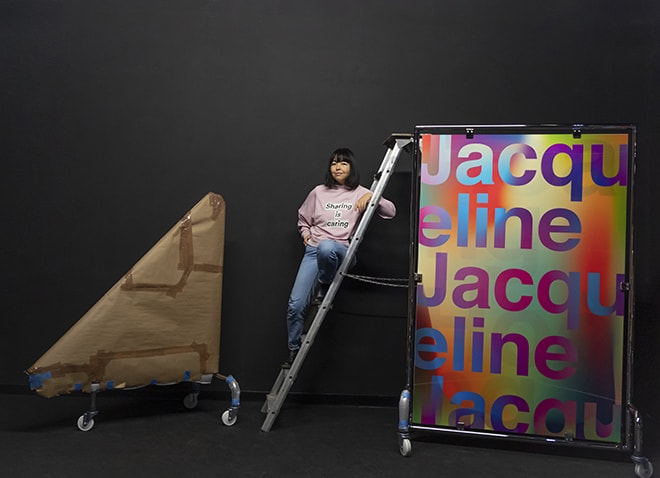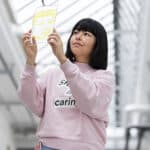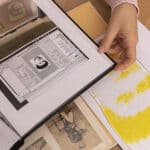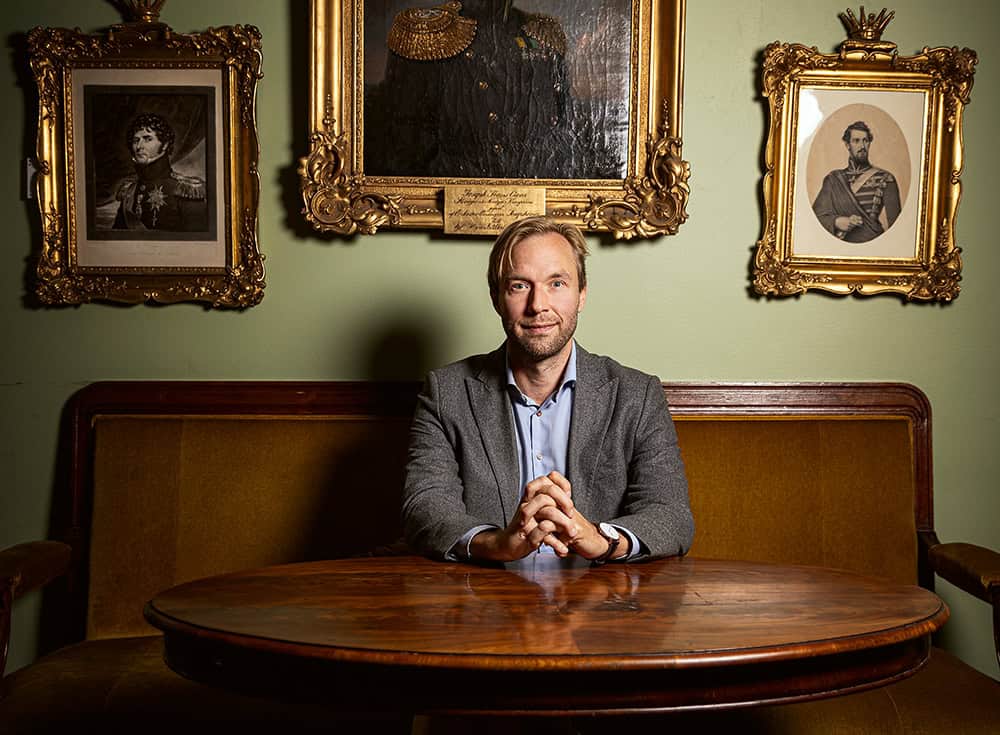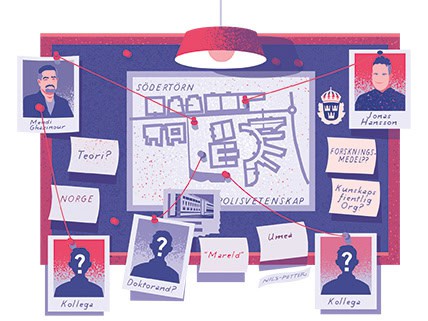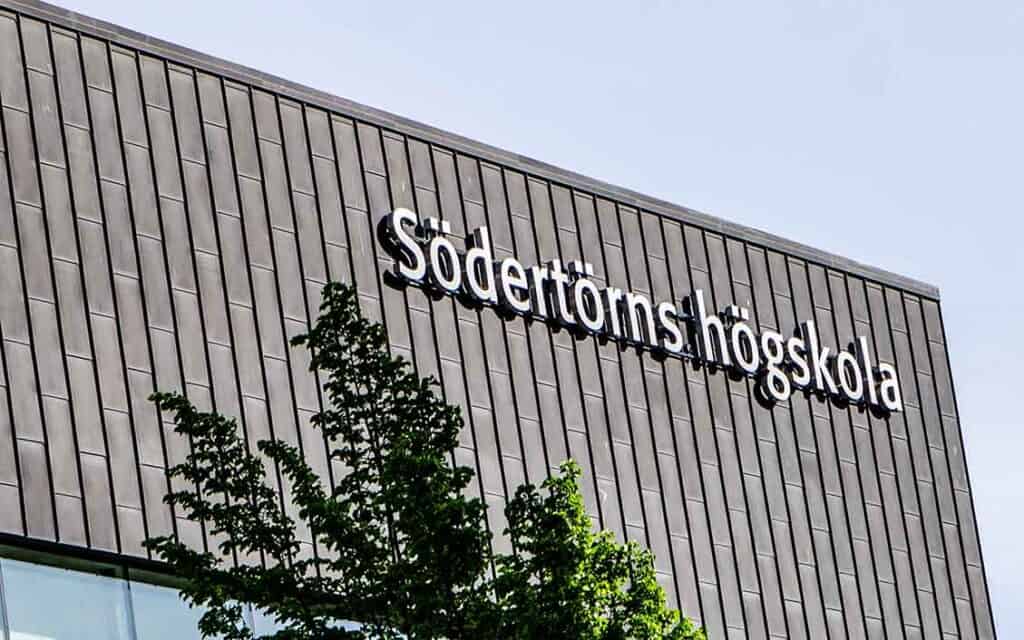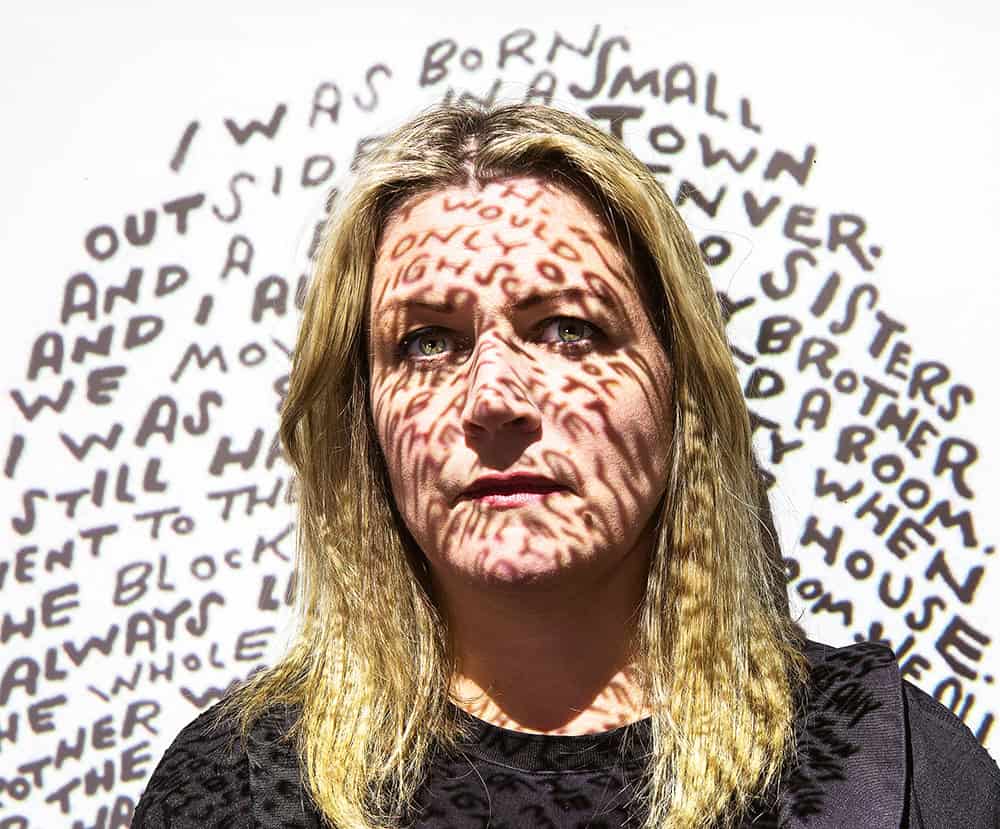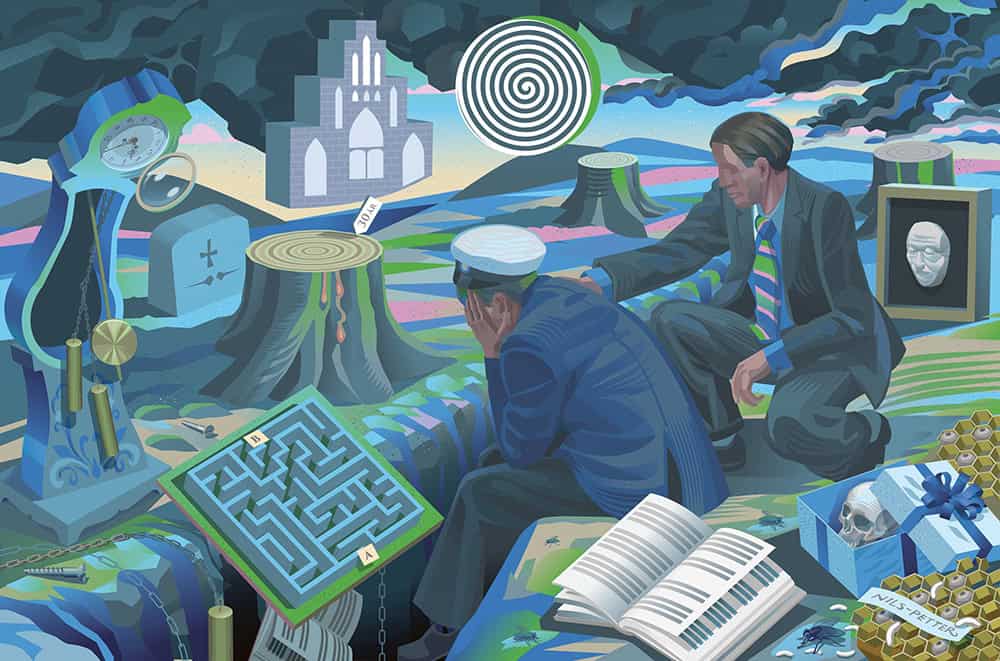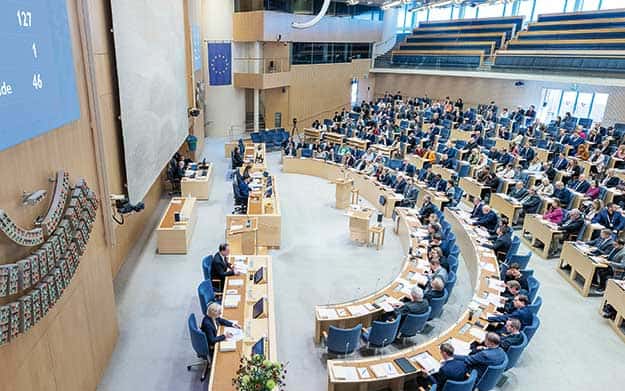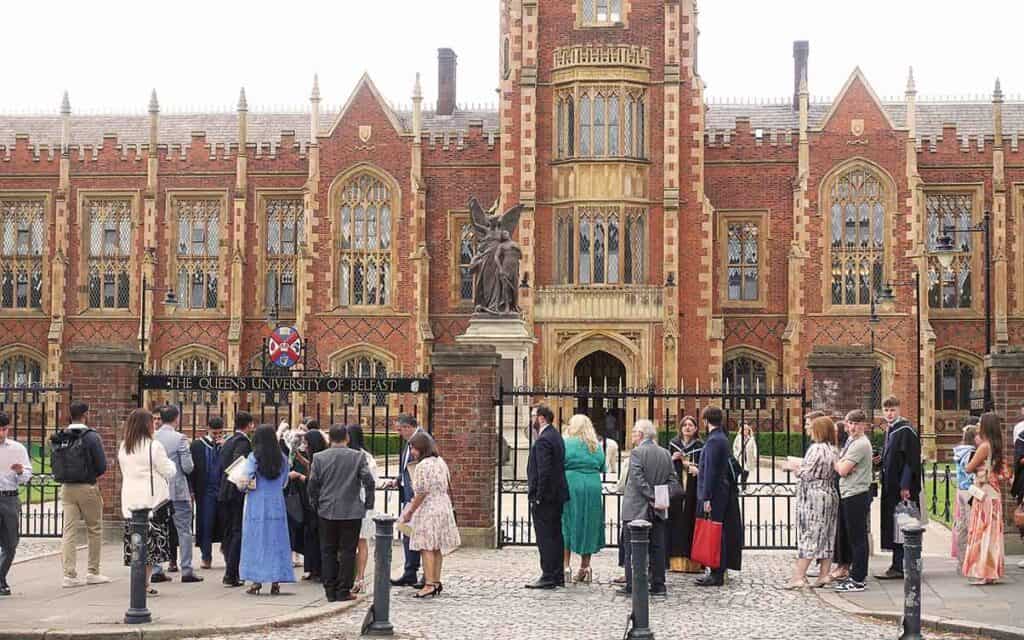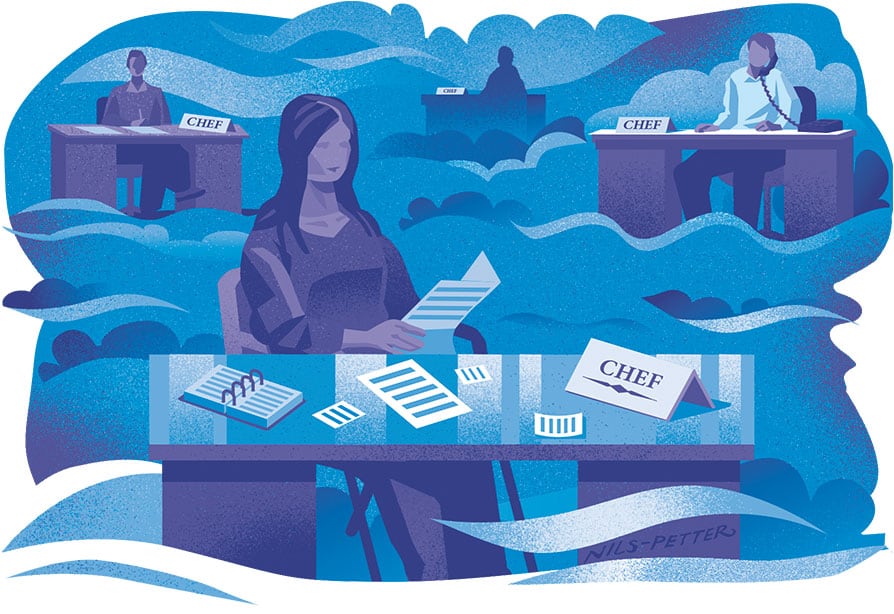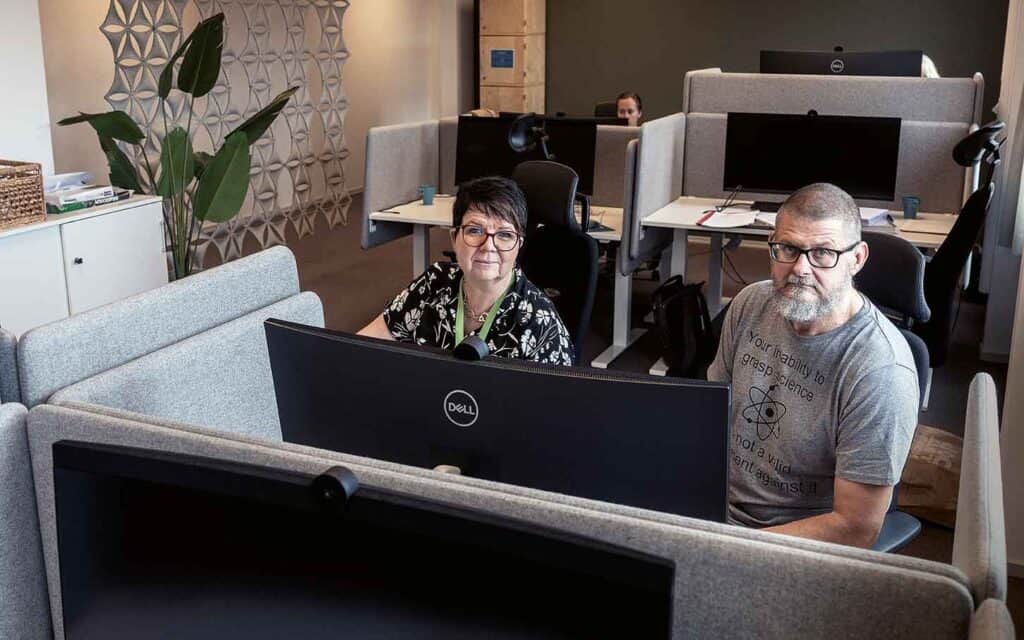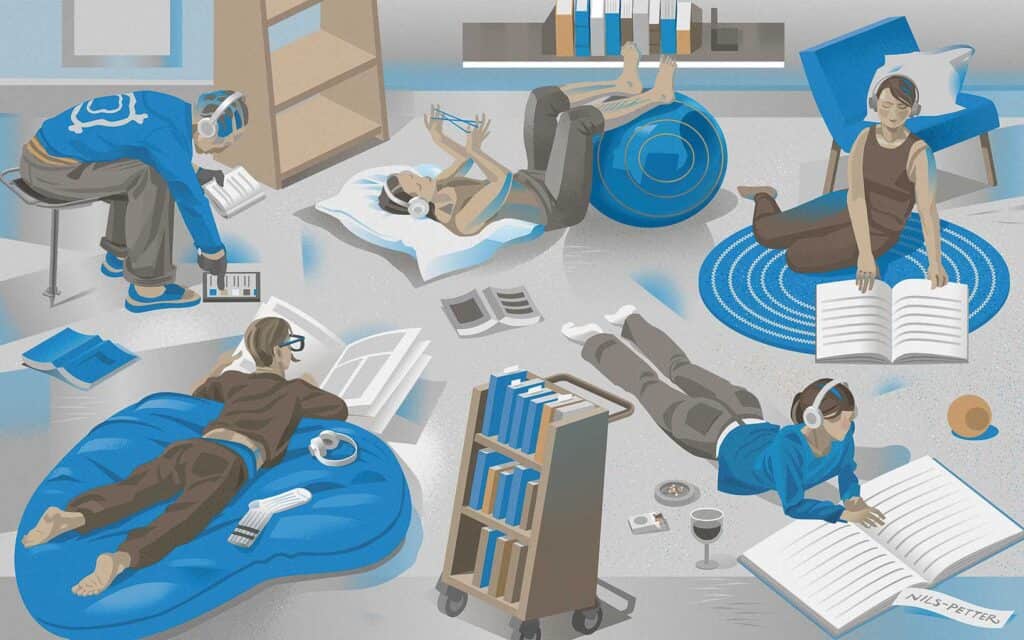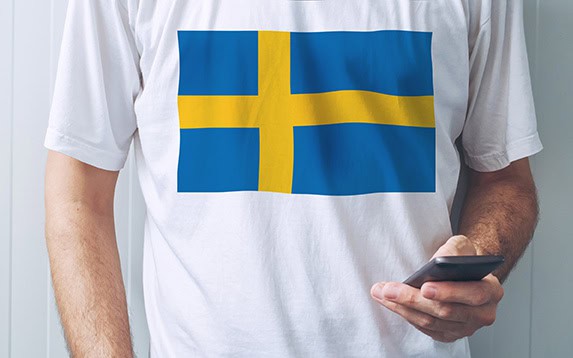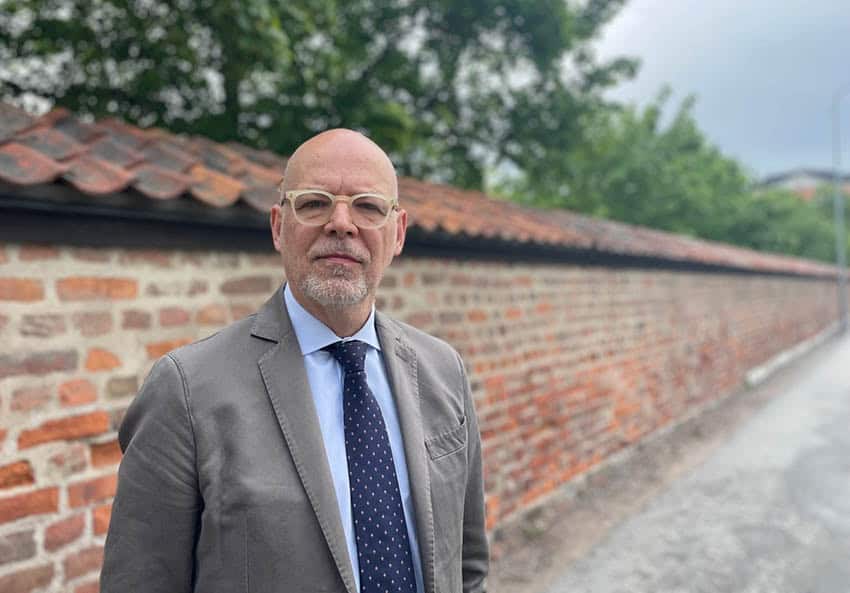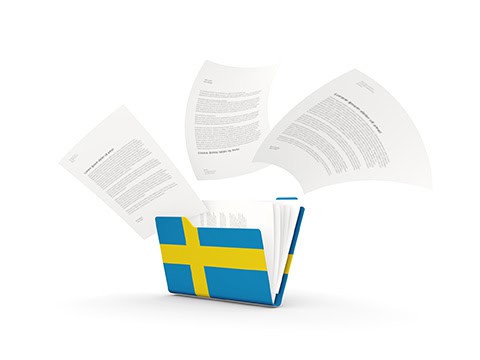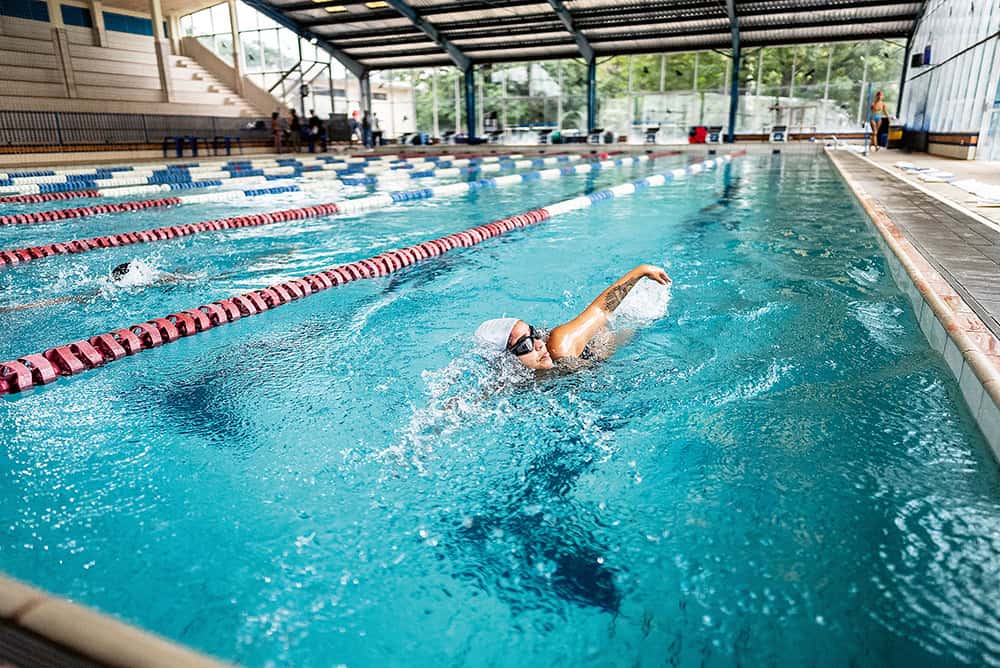The first work in Jacqueline Hoàng Nguyễn’s doctoral project was exhibited in 2019 – and was swept away during the last hour of the exhibition. It consisted of large sand paintings in bright colours depicting faded photos from her family’s past. Perishable testimonies.
Jacqueline Hoàng Nguyễn stands in her new workplace in Stockholm, dressed in a sweatshirt bearing the slogan “Sharing is caring”. Her historical treasure, lovingly passed down through generations, lies on the desk: a thick ring binder with photos behind thin plastic film.
The first photo is of her great-grandfather, a boy in elementary school around 1910 in what was then French Indochina, now Vietnam. It’s her great-grandfather’s photo collection. It stretches until his death in 1974, the year before the end of the Vietnam War.
Few Vietnamese had access to a camera during this time. Private documents that survived the war were in many cases burned for safety reasons if they had any links to the previous colonial and anti-communist regime. But Jacqueline Hoàng Nguyễn’s grandfather hid the family photos until he was able to take them safely to Canada in 1982.
Jacqueline was born in Montreal three years earlier. Her father had escaped the war and military service thanks to engineering studies in Canada, where her mother arrived as a refugee.
“There is a sadness in seeing the pictures of the life the family had but which was strangled, and of people who didn’t survive the escape,” says Jacqueline. “A lot has been lost. It also feels a little strange because there are people here that my family wanted me to feel a connection to but whom I have never met.”
Research based art
Her grandfather passed away in 2015, so he never knew that the photos would be part of the doctoral project she started at Konstfack and KTH in 2019. He had a PhD in medicine, and the family had high academic expectations of Jacqueline. The fact that she did not want to be a lawyer or a doctor, but since high school has determinedly built up an artistic career, is something her parents found difficult to come to terms with. had a hard time accepting.
“I loved mathematics when I was younger,” she says, “that it was like solving a puzzle. But I needed something more human in it, and I think I have brought the puzzle-solving aspect into my art.”
Even before she started her doctorate, she based her art on detailed research, often about historical events and underrepresented groups. In 2015, she was an artist residence at the Museum of Ethnography in Stockholm, and looking through the museum’s photographic archives was one of the inspirations for her doctoral project.
She had originally intended to put the museum’s pictures from Vietnam together with her own family photos, but soon realized that the protagonists behind the two collections of images and their respective perspectives and purposes were very different, and she doesn’t want to put her family in an ethnographic – often exotifying and anonymising – context.
“Woman in dress with dragon motif” was the only thing written on one of the photos she found in the archive. With the help of her own photo album, she could give the woman both her name and title: Nam Phương, the last Empress of Vietnam. The picture of the Empress in Jacqueline Hoàng Nguyễn’s photo album was a personal greeting to her great-grandfather. He was a mandarin, an adviser, at the court of the Nguyễn dynasty.
Cross-fertilisation of ideas
She moves on to a picture of a little boy in a sailor suit, her grandfather. Below each photo in the album, his neat handwriting provides the context in both Vietnamese and French. She explains that he held strong Confucian beliefs, with a focus on tradition and respect for elders, which gave him a strictness that created distance to her as a granddaughter. At the same time, he was engaged in the French humanistic tradition of ideas about freedom and equality. As a child, she found it difficult to reconcile these perspectives, but this cross-fertilisation of ideas in the historical development of Vietnam is now part of her research.
Through the history of Vietnamese photography and three leading intellectuals’ links to it, she wishes to throw new light on the struggle for a decolonised and modern Vietnam. One of the intellectuals, Khánh Ký, had a famous photographic studio with branch in Paris. He taught photography to another important person, the man who the world later came to know as Hô Chi Minh. The third person in this group of intellectuals was Phan Châu Trinh, who also made a living from photography.
“They represented a change of ideas from traditional, authoritarian Confucianism: How can you get your country back by understanding the modernisation of the West and absorbing and adapting it to your own needs? I think photography became one of the weapons brought in from the West.”
On the wall of her studio, she has a 2 x 1 metre sheet of paper on which she has mapped out how people and ideas have moved through time and space.
“It is not what is depicted during this time that is the most interesting thing for me, but the networks. What happens in the darkroom, both as a physical room and as a symbolic space? What alliances are created there? What ideas circulate? What new pictures and ideas are developed there?”
A written thesis and visual presentations
The Doctoral Programme in Art, Technology and Design is a new collaboration between the University of Arts, Crafts and Design (Konstfack) and the Royal Institute of Technology (KTH). It is KTH that awards the doctorate, which means that the doctoral project will be assessed on scientific rather than artistic grounds.
“There is an ongoing discussion about what this means. From what those of us in the programme have understood so far, there will be a two-part thesis to deliver, a written one and then a visual presentation.”
Jacqueline Hoàng Nguyễn’s research has links to history and anthropology, and she will use tools from these academic fields in her written thesis. But she’s not going to present her research visually through one art project, but three – one for each chapter. She realises that this means more work than in the usual case of ”only” writing a thesis. Using a scholarship, she has hired four assistants to help her with research in archives in other countries. The workplace she rents is just a stone’s throw from her home to make it easier for her to work when her six-year-old daughter has fallen asleep in the evenings.
For the second of her doctoral project works, she is still exploring sand as a means of expression – but in the form of glass. It is stronger and more permanent, but still fragile. At the same time, she is writing the script for a film that will be the third work, describing a hundred years of Vietnam’s own photographic history, starting in 1869.
Unfortunately, there is not much visual material preserved from that time. Jacqueline therefore plans to tell some of the early photographic history using traditional Vietnamese puppet theatre in water. It is a popular art form performed in the rice fields, but it is becoming increasingly rare.
If the corona pandemic had not forced them to postpone their plans, Jacqueline Hoàng and her family would have been living temporarily in Vietnam right now to allow her to collaborate with a water puppet theatre. Instead, she has used the pandemic year to focus more on her written thesis.
Art exhibition in Stockholm
In parallel with her research, she continues with her other art. In February and March this year, she is exhibiting her work Untitled (Entitled) at the Bonniers Konsthall gallery in Stockholm. The work is based on interviews with immigrants who felt compelled to change their names to avoid discrimination.
Jacqueline Hoàng Nguyễn was actually not named Jacqueline, but Hoàng. But her parents wanted to make things easier for her, ”and for teachers and friends”, when she started school. In Canada, the name is Jacqueline not even officially registered, but it is in Sweden since she moved here.
“Jacqueline is my western and public self. Hoàng is the private, the Vietnamese.”
